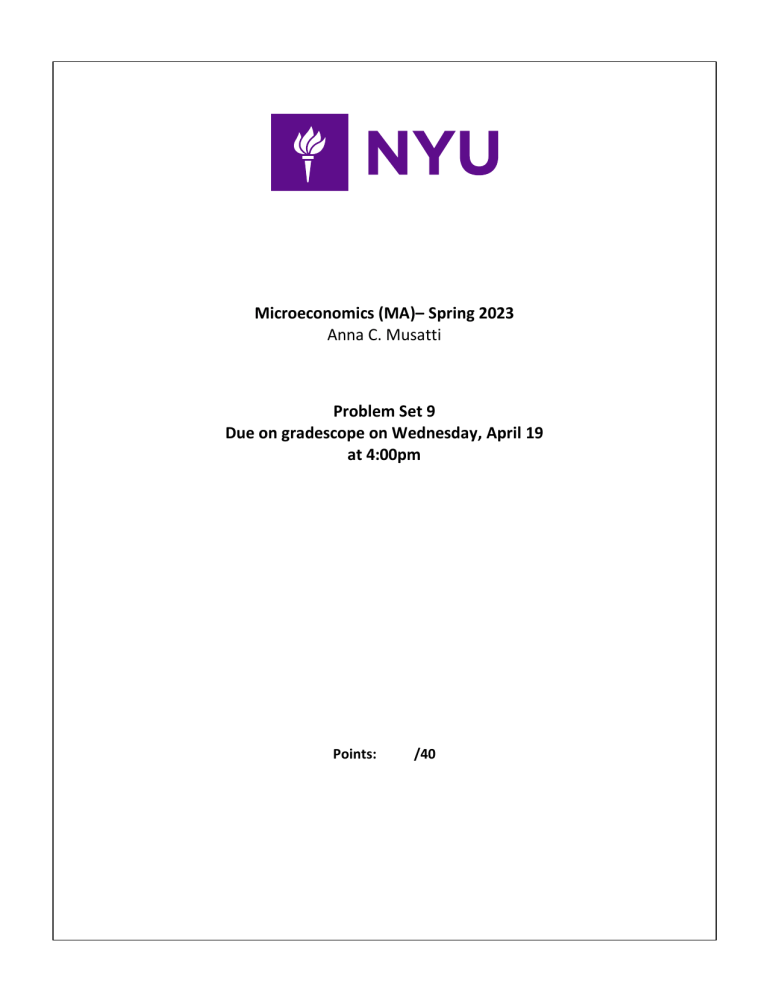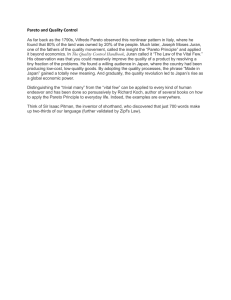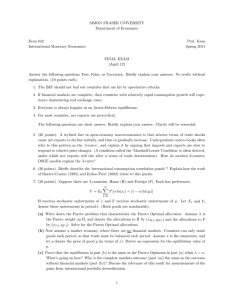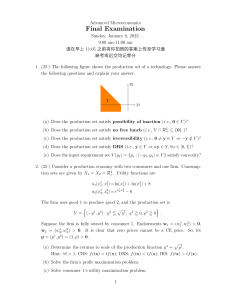
Microeconomics (MA)– Spring 2023
Anna C. Musatti
Problem Set 9
Due on gradescope on Wednesday, April 19
at 4:00pm
Points:
/40
Question 1.
Consider a pure exchange economy with initial endowments of two goods, 1 and 2, equal to ω = (20; 10).
The consumers in
this economy have utility functions UA (x) = x 1A x2A and U B (x) = x 1B+ √𝑥2 𝐵 .
a) Draw the Edgeworth Box for this economy.
b) Find the Pareto Optimal distributions and illustrate them in the box. Keep in mind that since consumer B has quasilinear
preferences some pareto optimal distributions might be on the boundaries of the box.
Question 2.
Consider a pure exchange economy with two goods, x1 and x2, and two consumers characterized by initial endowments ωA = (1, 0) and
ωB = (0, 1) and by identical Cobb-Douglas utility functions = x1i0.5x2i0.5
a. Does this economy satisfy the conditions for the First Welfare Theorem?
b. Show that the line x1A = x2A is the Set of Pareto Optimal distributions.
c. Last, use the the 1st Welfare Theorem (every Walrasian Equilibrium is Pareto Optimal) and the first order condition of the
UMP (MRS2,1 = p1/p2) to find the Walrasian Equilibrium in this economy.
Problem 3
Consider a Robinson Crusoe economy where labor time (L = l -l) can be transformed into a consumption good (c) according to the technology Y = {(-l; q)
∈ ℝ2+ | q ≤ 𝑓(𝐿)}.
In this economy, the Pareto optimal allocation solves:
Choose l ≥ 0, c≥ 0, q≥ 0 and L≥ 0 to
maximize U(l, c)
Subject to: q = f(L)
technological constraint
c = q + c feasibility constraints
L = l – l
a) Write the Lagrangian function for this problem and show that at the interior solution |MRS| = MU l/MUc = MPL = |MRT|.
Now, suppose that U(c,l) = 2l + c; f(L) = 3√𝐿 and the initial endowment of time and consumption good is = (l = 1, c =0).
3
b) In a cartesian diagram where you measure leisure time along the horizontal axis, illustrate the production set Y (in the II quadrant) and the feasibility
set X(E). (In the I quadrant).
c) Find the Pareto optimal allocation, l*, c*, q*, L*.
Then normalize the price of the consumption good to 1 and call w the wage rate.
d) Set up the firm’s profit maximization problem.
e) Solve the first order conditions and find the firm’s demand for (-l) and its supply of q as functions of w. The substitute into the expression for the
firm’s profit and find the firm’s profit function (p)
f) Write the consumer maximization problem for the consumer. Keep in mind that the consumer receives 100% of the firm’s profit.
g) Solve the utility maximization problem of the consumer and find the consumer’s demand for c and supply of l a function of w.
h) Using the market clearing condition c* = q* find the equilibrium relative price w*.
i) Substitute w* into the demand and supply functions to find c*, q* l*.
Page 2






